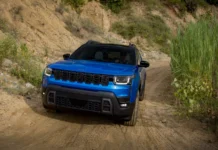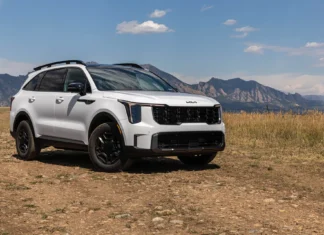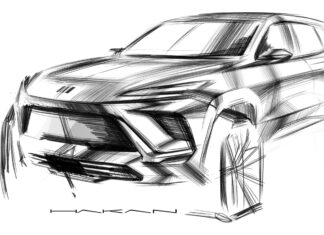If you’re looking into buying the 2020 Honda CR-V Hybrid or Toyota RAV4 Hybrid, odds are fuel economy is near the top of your priority list. On that front, both cars offer substantial improvements over their gas-powered counterparts. The CR-V manages 38 mpg in combined figures while the RAV4 returns a 40 mpg combined. However, these are both still crossovers, and another reason many folks buy crossovers is for their all-wheel drive capability. Both Honda and Toyota’s hybrid crossovers send power to all four wheels, but each one goes about it in different ways. So how do they actually performed in real-world loss-of-traction scenarios?

To find out how well each one does, Tommy puts both the 2020 Honda CR-V Hybrid and Toyota RAV4 Hybrid through the TFL Slip Test. We have actually taken the new Toyota RAV4 Hybrid off-road before, and it performed surprisingly well. Mind you, the Toyota RAV4 Hybrid does not mechanically link the front and rear wheels as you’d expect in a standard all-wheel drive crossover. Instead, it uses the gasoline engine to power the front wheels, while the electric motor plays wingman at the back, kicking in when driving in pure EV mode or when power is needed at the rear.
The 2020 Honda CR-V, on the other hand, does use the same all-wheel drive system as its non-hybrid cousin. However, it leans on its two-motor hybrid setup most of the time, only using the gasoline engine to drive the wheels when computers deem it the most efficient course of action. In the two-motor system, one engine drives the wheels while the other acts as a generator, capturing energy from the regenerative braking and the gasoline engine.

A surprising result
In terms of power, the 2020 Honda CR-V Hybrid manages a combined output of 212 horsepower. The Toyota RAV4 Hybrid puts out a similar 219 horsepower, though how it makes use of that power feels a bit different due to the lack of a physical connection between the front and rear wheels.
And indeed that drive system may hamper the Toyota RAV4 when it comes to getting unstuck in certain conditions. In our slip test, the Honda CR-V felt like it outperformed its rival with its more traditional all-wheel drive system. It also did a better job grabbing whichever wheel was spinning using the brakes than did the Toyota, so the Honda surprisingly came out ahead, at least in this comparison.























